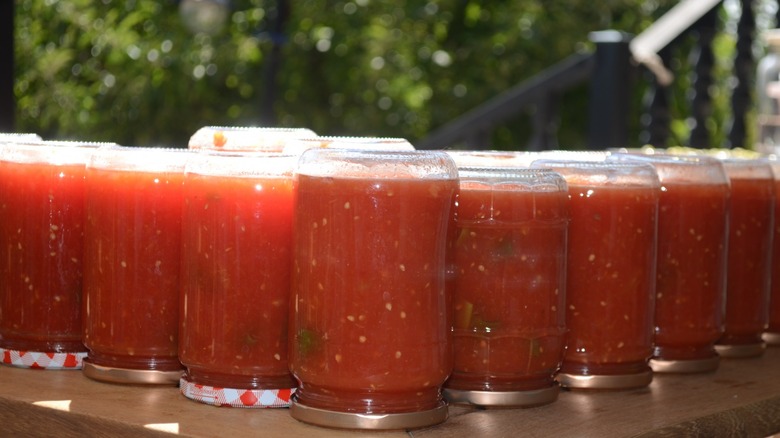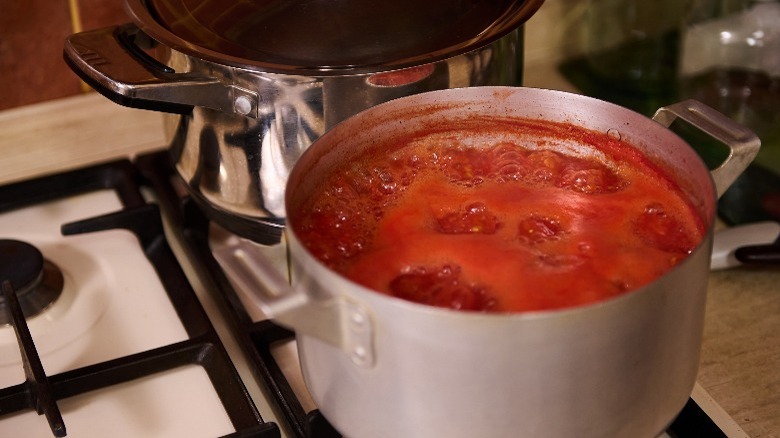Why Your Homemade Canned Tomato Juice Separated
There are countless ways to use tomatoes, and canning them as juice is a skill that's well worth picking up. But when your final product ends up in two layers, you won't have the sense of accomplishment you were hoping for. That solid red chunk and orange-ish liquid layer stubbornly staring at you will make you want to shove those jars to the back of the pantry so no one learns of your canning botch job. But did you really fail?
Separated tomato juice is neither indicative of a poor canning job nor is it harmful to consume. If you give the jar a little shake, it will all come together nicely, and you can use it without any worries. But the mixture will separate again after a few minutes of settling down, and it all comes down to the chemistry at work inside the jar.
Tomato juice separates into layers because of the action of pectinesterase, aka pectin methylesterase. This is a naturally occurring enzyme that breaks down pectin, a starch in fruits and vegetables that separates the juice into solid and liquid parts. See the watery solution at the bottom of your fresh tomato salsa? That is pectinesterase at work.
Pectinesterase is the culprit, quick heating is your solution
Pectinesterase is only activated once your tomatoes are cut and left at room temperature. The trick to halting the enzymatic action is to heat your tomatoes quickly after slicing them. To do this, cut the ripe fruits into quarters and add them into the saucepan as you crush and stir the mixture, simmering each (roughly 1 lb) batch for five minutes.
Repeat this process until you've run through all the tomatoes you intend to can. From here, you can start the canning process by sieving out the seeds and skins, adding bottled lemon juice (a natural emulsifier) to the jars, and filling them with your yummy tomato juice. Remember to leave headspace in the jars when doing this to make processing and properly sealing them a breeze.
It's important to point out that when heating your tomatoes, make sure you are gently heating and don't exceed five minutes, as this will break down the pectin and lead to the juice's separation.

